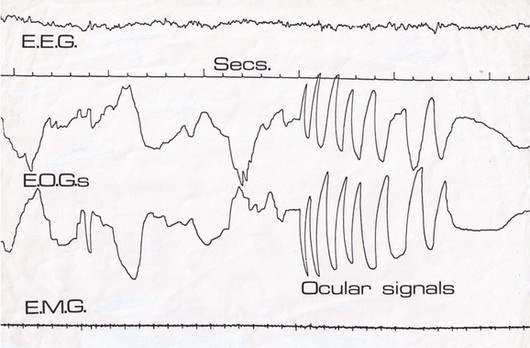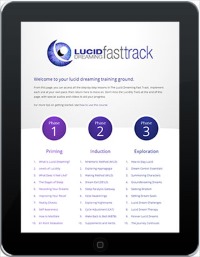What is Lucid Dreaming?

What is lucid dreaming? Is it scientifically proven? Can anyone learn to lucid dream on demand? How long does it take? What else can I use dream control for?
I'm sure you have plenty of questions about lucid dreaming and this article aims to answer the most burning ones. Welcome to my quick start guide to lucid dreams.
What is Lucid Dreaming?
Lucid dreaming is the ability to consciously observe and/or control your dreams.
It transforms your inner dream world into a living alternate reality - where everything you see, hear, feel, taste and even smell is as authentic as real life.
Lucidity occurs during altered states of consciousness when you realize you are dreaming - and your brain switches into waking mode inside the dream.
In normal dreams, your self awareness is shut down. That's why they often feel fuzzy and distant. But when lucid, the conscious brain wakes up during sleep.
This is a safe and natural state. It is not anything spooky or paranormal (in fact, out of body experiences are thought to be explained by the lucid dream state). With lucid dreams, you are always asleep in bed.
And if you want to, you can wake yourself up.
But who'd want to do that! When you become lucid, your senses become alive. You can explore the inner workings of your unconscious mind with total freedom.
Is Lucid Dreaming Scientifically Proven?
Tibetan Monks have used dream control for more than a thousand years, in the philosophy of dream yoga.
However, the modern term "lucid dreaming" was not created until the 1800s by the passionate dream researcher Marquis d'Hervey de Saint-Denys.
The concept of lucid dreams became popularized by Celia Green in the 1960s, who pointed out the scientific potential of self awareness in dreams. She was the first to make the link with both REM sleep and false awakenings.
The first scientific evidence of lucid dreaming was produced by the British parapsychologist Keith Hearne in 1975. He did it by catching the pre-determined conscious eye movements from a lucid dreaming volunteer.

A sequence of left-right ocular signals, recorded by Keith Hearne using a Grass polygraph.
Hearne's research slipped under the radar of the mainstream science journals, and it was Stephen LaBerge at Stanford University who became famous for replicating this experiment and formally publishing his findings.
A prolific lucid dreamer himself, LaBerge founded The Lucidity Institute in 1987 to explore the question: what is lucid dreaming? His mission is to research the nature and potential of consciousness in dreams... A riddle that may one day offer considerable advances in our understanding of the human mind.

Lucid Dreaming Tutorials
Lucid dreaming is a learnable skill. Start right now by signing up to our tutorial-based, interactive learning plaform the World of Lucid Dreaming Academy.
Can Anyone Learn to Lucid Dream?
Yes, experts believe so. We all have dreams (whether we remember them or not) and so we all have the capacity to become conscious within them.
Children learn to lucid dream intuitively. And certain medications for degenerative conditions like Parkinson's Disease can cause lucid dreams. Age and cognitive ability appear not to factor into the equation.
Having a lucid dream is not actually that hard, once you tap into the right mechanism.
Research shows that everyone will have at least one lucid dream in their lives, just by accident. And to have lucid dreams on demand, all you have to do is get into the habit of recognizing the dreamstate.
There are many ways you can achieve this habitual recognition, such as:
- Meditation - to focus your mind on demand
- Visualization - to enter the lucid dream state from waking
- Reality checks - to produce spontaneous self awareness in dreams
- Dream herbs - to make your dreams longer and more vivid
- Dream journaling - to cement dream memories in the waking world
- Mnemonic techniques - to produce spontanous lucidity in dreams
You can practice one or all of these methods during the waking day or just before you fall asleep in order to plant the seed of lucidity. It is up to your unconscious mind to trigger you during sleep.
The first moment of lucidity is the hardest - but this unconscious programming becomes easier over time.
In fact, one study found that committed students of lucid dreaming were able to have their first lucid dream, on average, between 3-21 days.
Your first taste of lucidity will provide all the motivation you'll need to continue your mental training. It is like nothing else you've ever experienced before.

What is Lucid Dreaming Good For?
At first, many people are drawn to lucid dreaming for escapism.
In your virtual reality dream world, you can realistically fly over cities, meet your favorite celebrity in the flesh, or become a ninja assassin. It is way more realistic than day dreaming or playing your favorite video game. It's like it's actually happening to you.
Although the novelty value hardly wears off, you'll soon discover lucid dreaming has many personal growth applications, too:
- Problem solving
- Increasing your creativity
- Facing your fears
- Improving your confidence
- Practicing new skills
- Developing your sense of self
- Exploring your unconscious mind
If this sounds good, you can start learning right now with our 30-module interactive course.
Final Thoughts
Lucid dreaming is a powerful psychological tool and an enriching conscious experience.
As a beginner, intermediate or expert oneironaut, I hope you find this website and its complete guide to lucid dreaming useful in your quest for self awareness in the unconscious dream world.
















